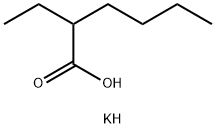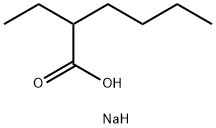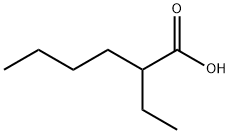ISOOCTYL ALCOHOL
- CAS NO.:26952-21-6
- Empirical Formula: C8H18O
- Molecular Weight: 130.22792
- EINECS: 248-133-5
- SAFETY DATA SHEET (SDS)
- Update Date: 2025-12-17 09:50:41

What is ISOOCTYL ALCOHOL?
The Uses of ISOOCTYL ALCOHOL
Intermediate in the manufacture of 2- ethylhexyl acetate, a lacquer solvent; solvent for nitrocellulose, urea, resins, enamels, alkyd varnishes, and lacquers; used in ceramics, paper coatings, textiles, and latex rubbers
Definition
ChEBI: 6-methylheptan-1-ol is a primary alcohol that is heptane which is substituted by a methyl group at position 6 and a hydroxy group at position 1. It has a role as a mammalian metabolite. It is a primary alcohol and a volatile organic compound.
General Description
A clear colorless liquid with a faint pleasant odor. Flash point 180°F. Less dense than water and insoluble in water. Vapors are heavier than air. Used as a solvent, in the making of cutting and lubricating oils, in hydraulic fluids, and in the production of other chemicals.
Air & Water Reactions
Insoluble in water.
Reactivity Profile
ISOOCTYL ALCOHOL attacks plastics. REF [Handling Chemicals Safely, 1980. p. 236]. Acetyl bromide reacts violently with alcohols or water, [Merck 11th ed., 1989]. Mixtures of alcohols with concentrated sulfuric acid and strong hydrogen peroxide can cause explosions. Example: An explosion will occur if dimethylbenzylcarbinol is added to 90% hydrogen peroxide then acidified with concentrated sulfuric acid. Mixtures of ethyl alcohol with concentrated hydrogen peroxide form powerful explosives. Mixtures of hydrogen peroxide and 1-phenyl-2-methyl propyl alcohol tend to explode if acidified with 70% sulfuric acid, [Chem. Eng. News 45(43):73(1967); J, Org. Chem. 28:1893(1963)]. Alkyl hypochlorites are violently explosive. They are readily obtained by reacting hypochlorous acid and alcohols either in aqueous solution or mixed aqueous-carbon tetrachloride solutions. Chlorine plus alcohols would similarly yield alkyl hypochlorites. They decompose in the cold and explode on exposure to sunlight or heat. Tertiary hypochlorites are less unstable than secondary or primary hypochlorites, [NFPA 491 M, 1991]. Base-catalysed reactions of isocyanates with alcohols should be carried out in inert solvents. Such reactions in the absence of solvents often occur with explosive violence, [Wischmeyer(1969)].
Health Hazard
Inhalation hazard slight. Skin contact results in moderate irritation. Liquid contact with eyes causes severe irritation and possible eye damage.
Properties of ISOOCTYL ALCOHOL
| Melting point: | -117.1°C |
| Boiling point: | 170.96°C (estimate) |
| Density | 0.832 |
| refractive index | 1.4046 (estimate) |
| form | Liquid; a mixture of closely
related isomeric, primary alcohols with
branched chains |
| Odor | at 100.00 %. fatty orange rose |
| Odor Threshold | 0.0093ppm |
| CAS DataBase Reference | 26952-21-6(CAS DataBase Reference) |
| EPA Substance Registry System | Isooctanol (26952-21-6) |
Safety information for ISOOCTYL ALCOHOL
Computed Descriptors for ISOOCTYL ALCOHOL
New Products
Indole Methyl Resin tert-butyl 9-methoxy-3-azaspiro[5.5]undecane-3-carboxylate Boc-His(Boc)-OH 2-CTC Resin 4-Chloro-7-tosy1-7Hpyrrolo[2,3-d]pyrimidine 5,7-Dibromo-1H-indole 2,5-dichloro-N-hydroxy-4,6-dimethylpyridine-3-carboximidamide 2,2-Dimethoxy-7-azaspiro[3.5]nonane hydrochloride 4-chloromethyl-5-methyl-1,3-dioxol-2-one (DMDO-Cl) R-2-BENZYLOXY PROPIONIC ACID 1,1’-CARBONYLDIIMIDAZOLE 1,1’-CARBONYLDI (1,2-4 TRIAZOLE) N-METHYL INDAZOLE-3-CARBOXYLIC ACID 4-((2-hydroxyethyl)thio)benzoic acid 1-(TERT-BUTOXYCARBONYL)-2-PYRROLIDINONE Methyl 6-methylnicotinate 3-Pyridineacrylic acid tert-Butyl carbazate TETRAHYDRO-2H-PYRAN-3-OL 2-((4-morpholinophenylamino) (methylthio) methylene) malononitrile 3-(4-morpholinophenylamino)-5-amino-1H-pyrazole-4-carbonitrile 2,4-dihydroxybenzaldehyde 1,3-Diethyl-1,3-Diphenylurea Methyl 2-methylquinoline-6-carboxylateRelated products of tetrahydrofuran








You may like
-
 Pyridine 99.5% HPLC /UV SpectroscopyView Details
Pyridine 99.5% HPLC /UV SpectroscopyView Details
110-86-1 -
 Guanine , 99%View Details
Guanine , 99%View Details
73-40-5 -
 Piperazine Spot supply, best priceView Details
Piperazine Spot supply, best priceView Details
110-85-0 -
 Potassium Hydroxide 90%View Details
Potassium Hydroxide 90%View Details
1310-58-3 -
 Dibutyl PhthalateView Details
Dibutyl PhthalateView Details
84-74-2 -
 Imidazole Spot supply, competitive priceView Details
Imidazole Spot supply, competitive priceView Details
288-32-4 -
 Octadecyl 3-(3,5-di-tert-butyl-4-hydroxyphenyl)propionate 98% (GC)View Details
Octadecyl 3-(3,5-di-tert-butyl-4-hydroxyphenyl)propionate 98% (GC)View Details
2082-79-3 -
 Thiourea 99% ARView Details
Thiourea 99% ARView Details
62-56-6
